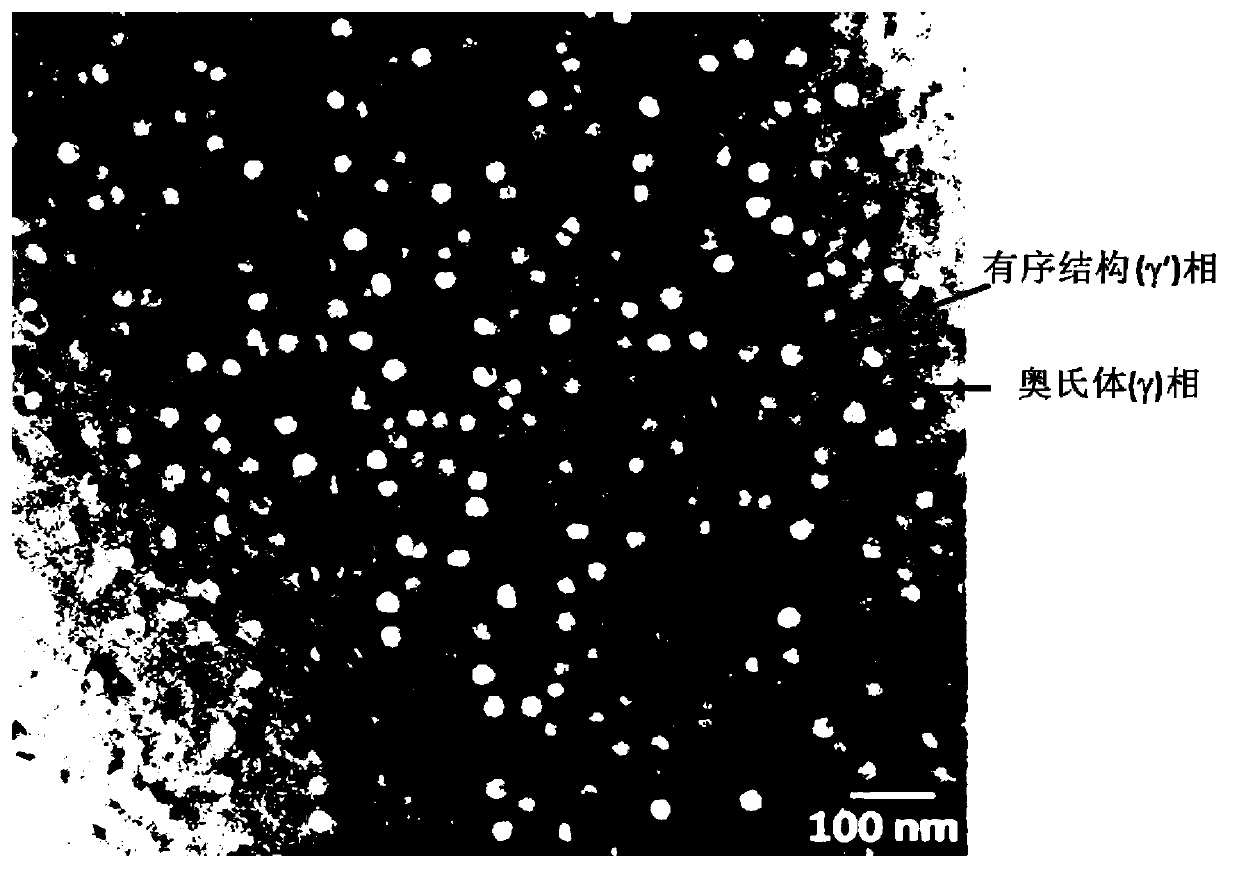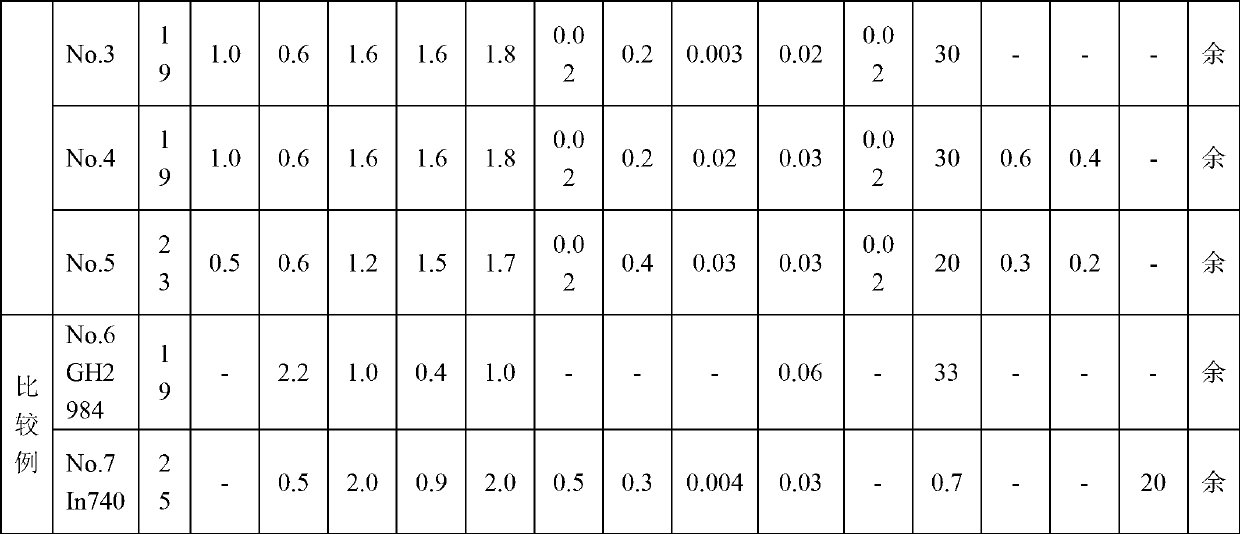High-strength and corrosion-resistant nickel-iron-chromium-based high-temperature alloy and preparation method for same
A high-temperature alloy and nickel-iron-chromium technology, which is applied in the field of high-strength corrosion-resistant nickel-iron-chromium-based superalloy and its preparation, can solve the problems of high price and poor hot formability, and achieves improved high temperature strength, improved hot workability, and improved resistance to corrosion. The effect of flue gas corrosive ability
- Summary
- Abstract
- Description
- Claims
- Application Information
AI Technical Summary
Problems solved by technology
Method used
Image
Examples
Embodiment 1-5
[0043] 1. The composition of the alloy
[0044] Table 1 provided the chemical composition of Examples 1, 2, 3, 4, and 5 of the present invention. Test materials No.1-No.5 are Ni-Fe-Cr-based alloys of Examples 1, 2, 3, 4, and 5 of the present invention. As comparative materials, No. 6 (the existing Ni-Fe-based alloy GH2984) and No. 7 (the existing Ni-Co-based alloy Inconel 740) were simultaneously prepared.
[0045] The chemical composition (weight %) of table 1 embodiment of the present invention and comparative example (GH2984, Inconel740)
[0046]
[0047]
[0048] 2. Alloy melting and thermal deformation
[0049] The elements of the alloy are melted in a vacuum induction furnace and cast into a master alloy ingot with a chemical composition that meets the requirements. Homogenize the master alloy ingot at 1150-1200°C for 20-40 hours. The homogenized master alloy ingot is subjected to hot deformation (hot rolling or hot extrusion) at 1000-1150°C, with a maximum def...
Embodiment 6
[0074] Step 1: By weight percentage, 22% Fe, 25% Cr, 1.0% Al, 1.5% Ti, 1.0% Nb, 1.0% Mo, 1.2% W, 0.8% Ta, 0.05% Si, 0.1% of Mn, 0.05% of Cu, 0.03% of C, 0.005% of B, 0.01% of Zr, and the balance of Ni are added to the vacuum induction furnace for melting and casting into master alloy ingots;
[0075] Step 2: Homogenize the master alloy ingot at 1200°C for 20 hours;
[0076] Step 3: hot deforming the homogenized master alloy ingot at 1150°C;
[0077] Step 4: The hot-deformed alloy is subjected to solid solution treatment at 1150° C. for 1 hour, then air-cooled, and then treated at 850° C. for 24 hours, and then air-cooled to obtain a high-strength, corrosion-resistant nickel-iron-chromium-based superalloy.
Embodiment 7
[0079] Step 1: By weight percentage, 26% Fe, 20% Cr, 2.0% Al, 2.5% Ti, 0.8% Nb, 0.5% Mo, 1.5% W, 0.7% Ta, 0.1% Si, 0.7% of Mn, 0.3% of Cu, 0.01% of C, 0.008% of B, 0.005% of Zr, and the balance of Ni are added to the vacuum induction furnace for melting and casting into master alloy ingots;
[0080] Step 2: Homogenize the master alloy ingot at 1150°C for 40 hours;
[0081] Step 3: hot deforming the homogenized master alloy ingot at 1100°C;
[0082] Step 4: The hot-deformed alloy is subjected to solid solution treatment at 950° C. for 4 hours, then air-cooled, and then treated at 650° C. for 16 hours, and then air-cooled to obtain a high-strength, corrosion-resistant nickel-iron-chromium-based superalloy.
PUM
| Property | Measurement | Unit |
|---|---|---|
| Size | aaaaa | aaaaa |
Abstract
Description
Claims
Application Information
 Login to View More
Login to View More - Generate Ideas
- Intellectual Property
- Life Sciences
- Materials
- Tech Scout
- Unparalleled Data Quality
- Higher Quality Content
- 60% Fewer Hallucinations
Browse by: Latest US Patents, China's latest patents, Technical Efficacy Thesaurus, Application Domain, Technology Topic, Popular Technical Reports.
© 2025 PatSnap. All rights reserved.Legal|Privacy policy|Modern Slavery Act Transparency Statement|Sitemap|About US| Contact US: help@patsnap.com



